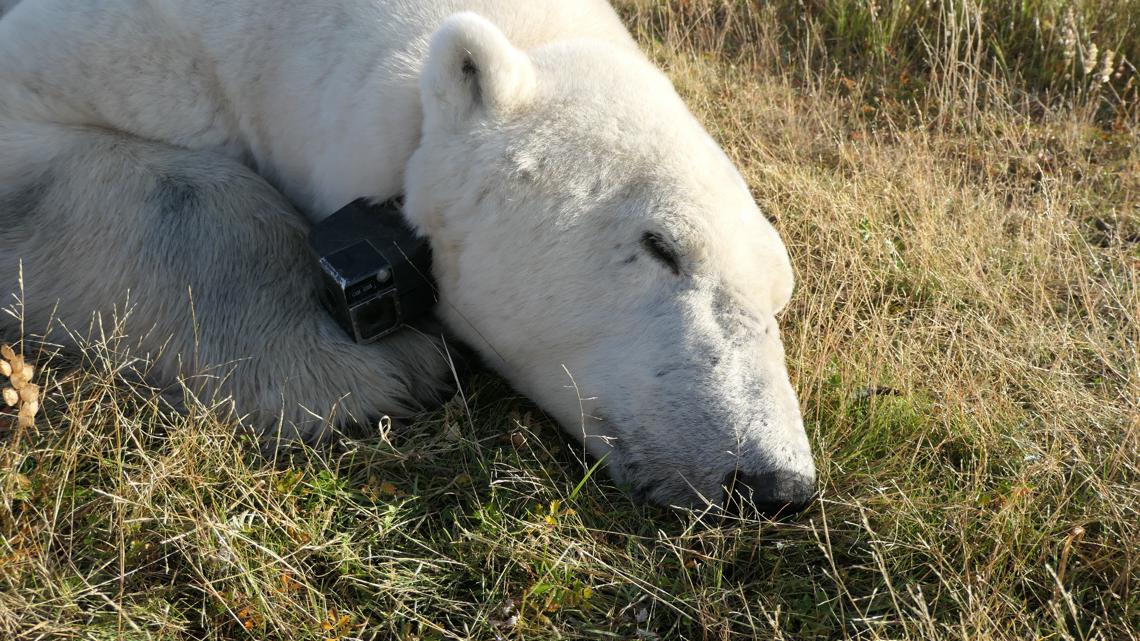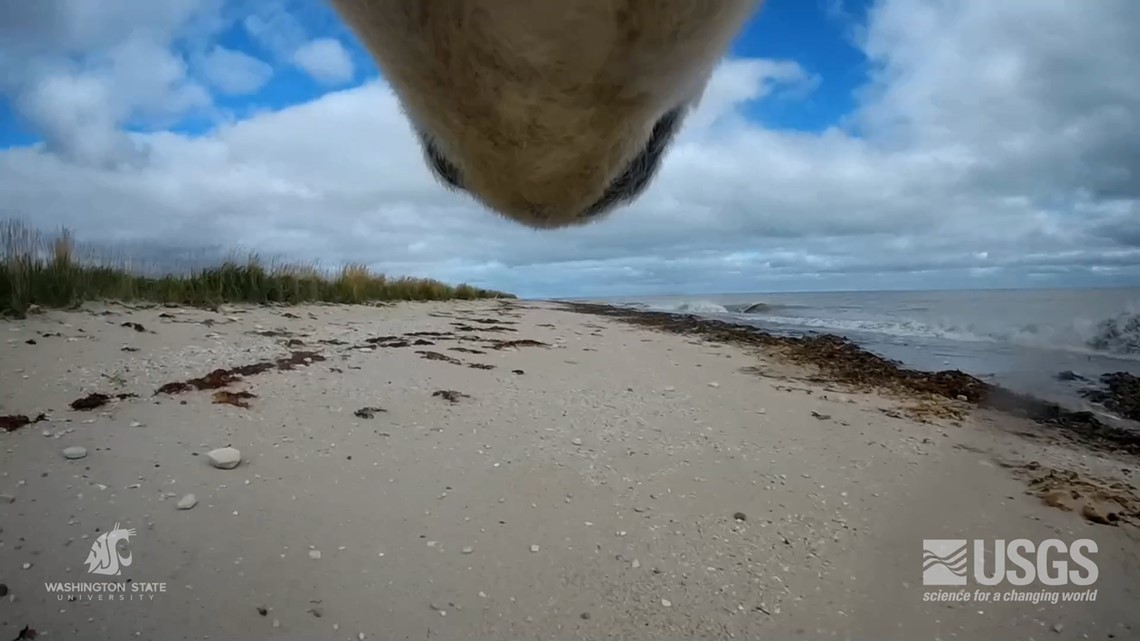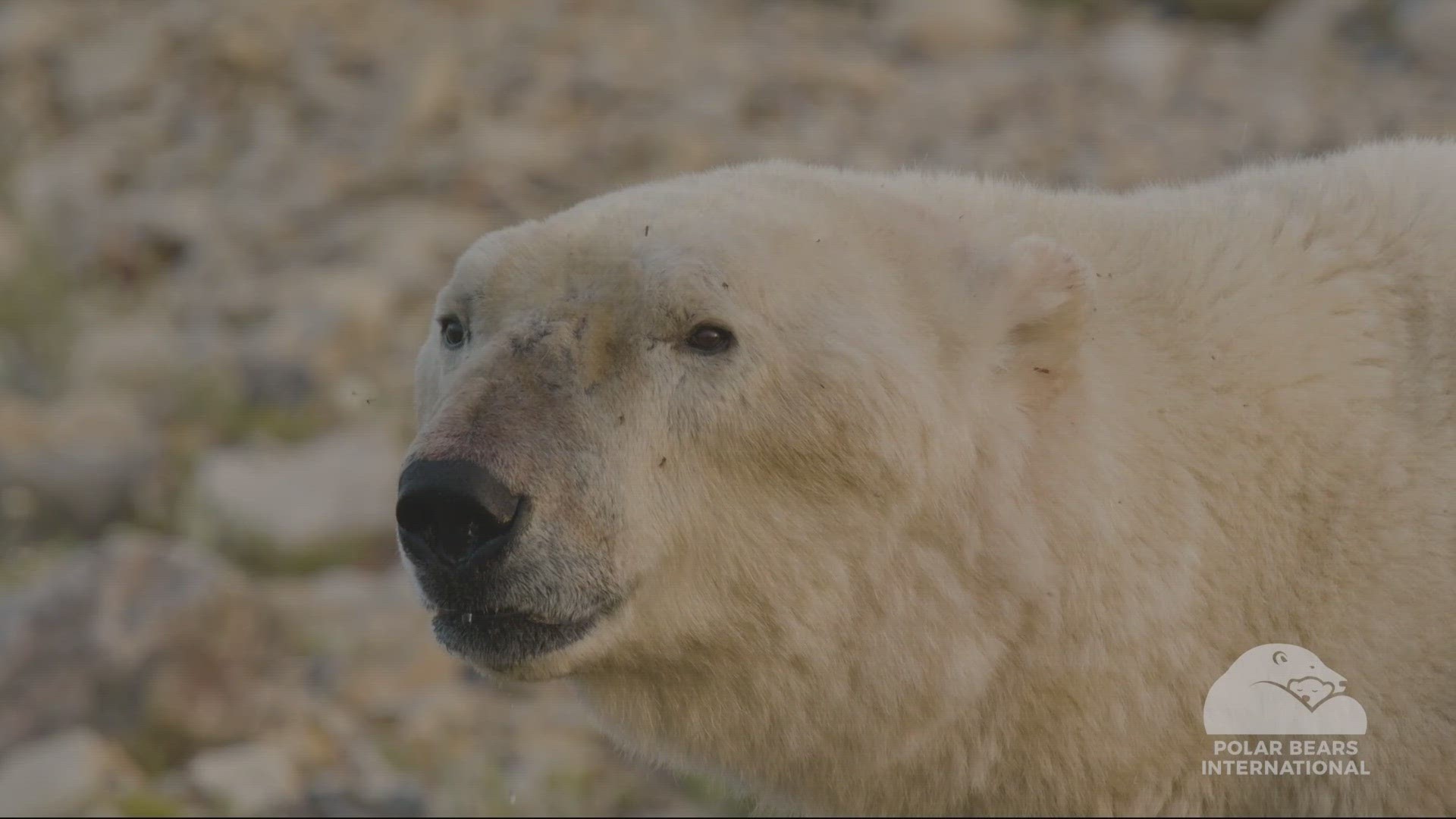PORTLAND, Ore. —
Polar bears don’t need much in life.
They need seals to eat, sea ice from which to hunt the seals and, if they’re lucky, a mate.
But some of those necessities are getting harder for the bears to come by.
The Arctic is warming up to four times faster than the rest of the planet due to heat-trapping greenhouse gases emitted by humans, and that means polar bear behavior is changing.
“One of the most common responses to Arctic sea ice loss has been polar bears spending more time on land,” said Karyn Rode, a research wildlife biologist based in Portland. “Some bears are summering on land and more bears are summering on land than have in the past, and they're also staying there longer.”
To determine what kind of effects these behavior changes are having on the animals, Rode worked with a team of researchers from Washington State University on a study published in the journal Nature Communications. The research team headed to the shores of Western Hudson Bay in Canada to track a group of 20 polar bears over a three-week period in the summer.
“There were two primary things we wanted to understand about what they were doing on land,” Rode said. “Whether or not they were feeding and what they were feeding on, but also how much energy they were expending.”
To figure out how much energy the bears were expending, the bears were sedated and administered non-harmful isotopes of hydrogen and oxygen that would show energy changes in blood samples.
The only way to determine how the bears spent their time, and what they ate, was to fit them cameras mounted on collars, essentially giving the researchers a bear’s-eye-view of how climate change was affecting the animal’s environment.


Some of the bears took the time they were forced on land to relax.
“There were bears that spent 90% or more of their time only resting,” Rode said, noting that the bear’s metabolism appeared to slow to a state close to hibernation.
Other bears took a different approach.
“A number of bears were active most of the time,” Rode said. “Some spent up to 40% of their time eating berries. Two swam out into Hudson Bay and found marine mammal carcasses. Others were wandering, eating birds.”


On sea ice, polar bears meet most of their dietary needs by feeding on fat-rich seals whose blubber provides all the calories a 1,000-pound bear might need.
Those calories are much harder to find on land, and nearly all of the bears in the study shed pounds over the course of the project, regardless of their level of activity.
“Despite this significant diversity and behavior, 19 of the 20 bears in our study lost weight, and they lost similar amounts of weight,” Rode said, adding that, on average, the bears lost more than two pounds per day.
Rode said this type of research will be helpful for those who live among the bears, as human-bear interactions are likely to increase as the animals spend more time on land.
Rode also noted that all the bears in the study appeared to be of healthy weights; none of them were starving. But with Arctic temperatures expected to continue rising in the coming decades, the results paint a foreboding picture for the future of the species.
“The terrestrial environments are just really no match for what they're obtaining when they're out on the sea ice, and that limits their ability to adapt as they spend more time on land,” Rode said. “They have physiology and behavior that can only be stretched so far relative to how they evolved to an environment, so I think polar bears are a really good case study.”
But polar bears are not alone as they face the challenge of a changing environment. Humans, too, will have to change their behavior as the climate warms and the planet sees hotter summers, more intense wildfires and stronger storms.
“There's a lot of discussion about how our planet and its species are coping with changes in the environment,” Rode said. “And there's definitely discussion that species can adapt, that adaptation can occur. What our study found was that there are limitations to the ability of species to adapt.”
Humans have already begun adapting to a changing climate, but in the long term, that will prove difficult for animals like polar bears.
“As polar bears are forced on land earlier, it cuts into the period that they normally acquire the majority of the energy they need to survive,” said Anthony Pagano, another U.S.G.S. researcher who contributed to the study. “With increased land use, the expectation is that we'll likely see increases in starvation, particularly with adolescents and females with cubs.”

